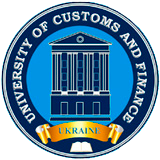PECULIARITIES OF DISOVERY OF HIDDEN OBJECTS OF ARTIFICIAL ORIGIN IN CUSTOMS CONTROL
Abstract
With the advent of near and later non-linear types of radar, it be came pos-sible to solve, in addition to radar, a number of other applied problems, such as problems of diagnostic and flaw detection, customs control, humanitarian demining, forensic science, archeology and construction with terrorism.
The article deals with the actual problem of peculiarities of detection of hidden objects of artificial origin, which are in the conditions of interaction with the control and measuring radio equipment of customs control, which do not sa- tisfy the criterion of the far zone.
The object/targets catering characteristics were compared both in the form of a complex reflection coefficient (obtained using a radio channel model) and in the form of an effective object/targets catering plane.
In general, the object/target is displayed from the point of view of aniso-tropic fixed-point emitter f for a fixed stationary orientation of the signal/signal relative to the propagation direction of the incident and reflected waves of stabi- lity of the polarization characteristics of the transmitting and receiving antennas of the radar.
The basic nonlinear radar equation is described, which describes the be-havior of a two-component radio system, in which some amplitude-frequency transformations of the radar transmitter sounding transducer signal are intro-duced into the reflection by nonlinear elements of the irradiated object/target.
Basically, nonlinear radio signals describing the behavior of a two-component radio system are considered, since the secondary reflection contains nonlinear signal elements that are often used to transmit frequency signals.
The results of the nonlinear transformation of the sounding signal on non-linear elements with harmonic frequencies are combinations there of are based on the analysis of the scattering properties of the model in the form of antennas with the nonlinearities included there in.
The task of expediency of carrying out full-scale experimental researches of character of behavior of effective reflection ability of specific typical objects for drawing up of a databank containing portraits of hidden images of typical cus-toms control object isset.
References
2. Musabekov P. M., Musabekov P. M. and Panychev S. N. (2000), “Nelineynaya radiolokatsiya: metodyi, tehnika i oblasti primeneniya” [“Nonlinear radar: methods, techniques and applications”], journal Zarubezhnaya radioelektronika. Uspehi sovremennoy radioelektroniki [Foreign Radio Electronics. Successes of Modern Radio Electronics], vol. 5, pp. 54–61.
3. Handbook / ed. Ya. D. Shirman (2007), Radioelektronnyye sistemy: osnovy postroyeniya i teoriya [Radio-electronic systems: fundamentals of construction and theory], Press Radiotechnika, Moscow, 512 p.
4. Zinchenko M. V., Wo Zui Fook and Zinkovsky Yu. F. (2017), “Testiro-vanie nelineynyih radiolokatorov na nadezhnost identifikatsii” [“Nonlinear radar testing for identification reliability”], bulletin Vestnik NTUU “KPI”, Seriya: Ra-diotehnika. Radioapparatostroenie. [Bulletin of NTUU “KPI”. Series: Radio en-gineering], vol. 68, pp. 48–53.
5. Zinchenko M. V., Wo Zui Fook and Zinkovsky Yu. F. (2017), “Issledo-vanie spektralnyih harakteristik rasseivayuschih MOM-struktur v nelineynoy lokatsii” [“Investigation of the spectral characteristics of scattering MOM structuresin a nonlinear location”], bulletin Vestnik NTUU “KPI”, Seriya: Radio-tehnika. Radioapparatostroenie [Bulletin of NTUU “KPI”, Series: Radio engineering], vol. 70, pp. 11–16.
6. Vernigorov N. S. and Kuznetsov T. V. (2002), “K voprosu o printsipe sravneniya v nelineynoy radiolokatsii” [To the question of the principle of comparison in nonlinear radiolocation”], journal INFORMOST Radio Electronics and Telecommunications, vol. 3 (21), pp. 8–14.
7. Belchikov A. V., Mishustin B. A., Dzisyak A. B. and Zaitsev V. K. (2011), “Vzglyad razrabotchikov nelineynyih lokatorov serii “Lornet” na nekotoryie aktualnyie voprosyi nelineynoy lokatsii” [“A lookat the developers of nonlinear locators of the Lornet series on some relevant issues of nonlinear location”], journal Tehnika. Arsenal. Spetsialnaya tehnika [Technics. Arsenal. Special equipment], vol. 5, pp. 14–20.
8. Shcherbakov G. N. (2004), Obnaruzhenie skryityih ob’ektov dlya guman-itarnogo razminirovaniya, kriminalistiki, arheologii, stroitelstva i borbyi s terro- rizmom [Detection of hidden objects for humanitarian mine clearance, forensics, archeology, construction and the fight against terrorism], Press Arbat-Inform, Moscow, 144 p.
9. Tarasenko Yu. S. (2011), Fizychni osnovy radiolokatsii [The physical foundations of the radiolocation], Press Porohy, Dnіpro, 487 p.
10. L’vova L. A. (2003), Radiolokatsionnaya zametnost’ letatel’nykh apparatov [Radar visibility of aircraft], Press RFYATS-VNIITF, Snezhinsk, 232 p.
11. Vernigorov N. S. (1997), “Protsess nelineynogo preobrazovaniya i ras-seyaniya elektromagnitnogo polya elektricheski nelineynyimi” [“The process of nonlinear conversion and scattering of an electromagnetic field is electrically nonlinear”], Collection of scientific works Institute of Radio-engineering and Electronics of RAS, vol. 42, pp. 11–13.
12. Shifrin Ya. S. (1997), “Nelineynyie effektyi v antennah” [“Nonlinear effects of antennas”], journal Zarubezhnaya radioelektronika. Uspehi sovremen-noy radioelektroniki [Foreign electronics. Successes of modern radio electronics], vol. 4, pp. 33–44.

 ISSN
ISSN 




